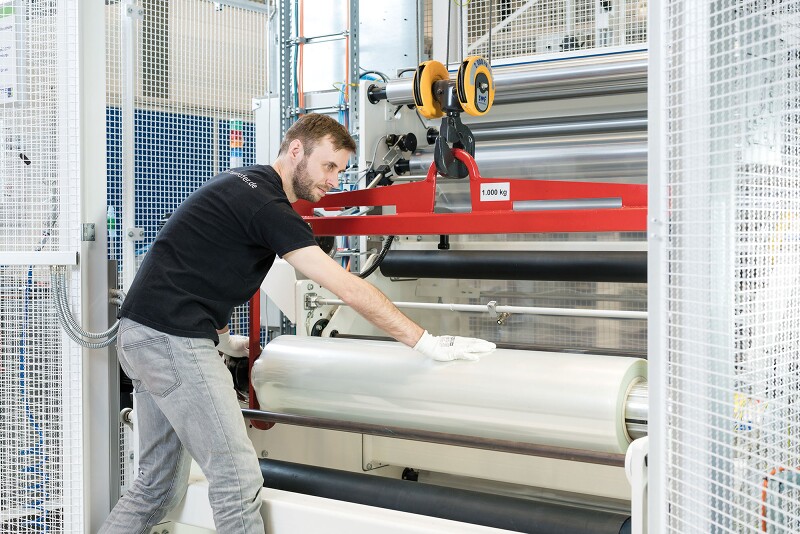The Fraunhofer Institute for Organic Electronics, Electron Beam and Plasma Technology FEP from Germany has said that as part of the EU-funded ‘OptiPerm’ project that it has developed a new technology for creating ultra-smooth surfaces on metal and plastic films that can be used for applications such as touch displays or OLEDs.
The technology, which was previously demonstrated on samples in A4 format, has now been successfully transferred to a roll-to-roll process with even higher surface quality. Scientists at Fraunhofer FEP have now developed a new method for creating ultra-smooth surfaces – dubbed the smoothing-film approach.
Dr. Steffen Günther, Project Manager at the Fraunhofer FEP said:
“This innovative process does not require any special processing environment and could therefore also be used under standard factory conditions. Expensive clean rooms are not required for this process.”
With this new approach, a wet coating is first applied to a flexible substrate. Immediately afterwards, the coating is covered while still wet with a second film, the smoothing film. Subsequently, the wet coating is cross-linked through the smoothing film by an energetic drying process. An electron beam is used therefore at Fraunhofer FEP due to its high performance regarding cross-linking ratio. The smoothing film may be lifted off directly after cross-linking or stay on top the coating as a protection until the next downstream processes take place. In order to reduce the costs for the smoothing films, their reusability was examined. The scientists were able to show that even after reusing the smoothing film ten times, no increase in defect density or decrease of surface quality was observed.
The process was initially carried out and evaluated on samples in A4 format. Subsequent is has been transferred to the roll-to-roll coating line “atmoFlex 1250”. This plant was built by the mechanical engineering company 3D-Micromac AG and offers the possibility to coat flexible films of 1.25 meter width in roll-to-roll process at Fraunhofer FEP. The results of the process transfer to roll-to-roll technology even exceeded the expectations by far. Not only was the reproduction of the new smoothing-film approach successful. The test results of the roll-to-roll processed substrates even outperformed those from the A4 samples by a factor of four.
The defect density determined using white-light interferometry was approx. 1%. This corresponds to the defect density of films planarized in expensive clean-room environments.


